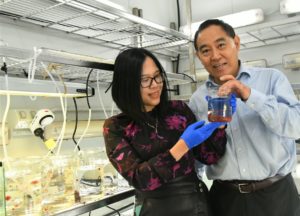Increasing Pressure on Aquaculture Industry to Expand
New technologies in marine aquaculture are increasing globally, not just to meet the growing demand for seafood as wild fish populations continue to decline but also to prepare for threats from climate change and ocean pollution.

With China leading the way, Australia and most other countries are adapting new techniques such as real-time water quality monitoring and fish growth tracking – and a broader range of ‘mariculture’ species potentially including genetically modified organisms for faster growth and disease resistance, says Flinders University Professor Jianguang (Jian) Qin.
“The industry is developing more advanced feeding and breeding programs, advanced water filtration systems and predictive analytics for optimising production,” says Professor Qin, who joins South China Sea Fisheries Research Institute expert and Flinders University PhD Dr Zhenhua Ma introducing a special edition of the Journal of Marine Science and Engineering.
“While fish provide vital human nutrition, temperature stresses are increasingly putting pressure on local fish, crustacean and molluscan species in coastal systems around the world,” says Professor Qin.
Dr Ma says China has a long history of innovative aquaculture practices covering the development of nutritional and sustainable nutrition for farmed fish, biotechnological applications and ecological management technologies.

The special issue shows how improving oceanic fish farming systems is pivotal to saving wild fish stocks from overfishing and further environmental degradation.
The species farmed in China include yellowfin tuna and mackerel tuna, greater amberjack, yellowtail kingfish, humphead wrasse, bluestripe snapper, golden pompano, yellow croaker, coral trout, shrimp (Penaeus monodon), sea cucumber, sea urchin and microalgae (Isochrysis zhanjiangensis).
Innovations include integrated wind turbine-fishing cages, reduction of disease, high temperature, nitrogen and salinity stresses via genetic selection, microsatellite markers and DNA barcoding for monitoring population dynamics and land-based and artificial reef production options.

